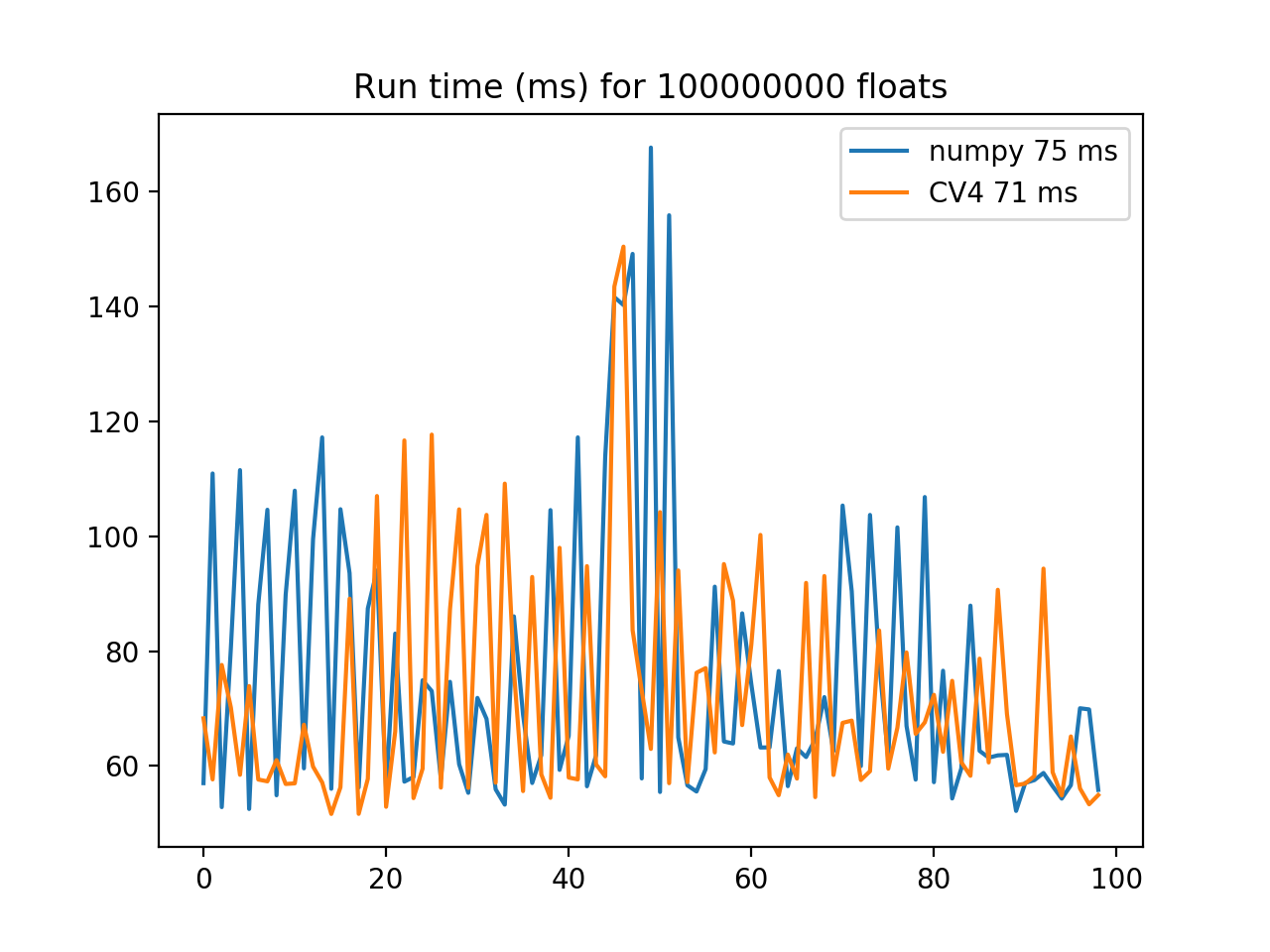- Python allocating NumPy array.
- Python calling C code to operate on the array.
- C code wrapping the array as an OpenCV Matrix, and operating on the array (here it multiplies by 2).
- Since the operation is in-place and operated on the Python allocated array, the Python code gets the algorithm result. For example, the same array multiplied by 2.
- No need for python/numpy binding and coding on the C code side.
- Therefor no code changes to algorithms that are already written in C code.
- Easiest way to test existing algorithms written in C using python.
- No need to allocate memory on C code since allocations are all ready done on python side.
- Once the python numpy array is contiguous, no overhead to C calls.
- Operating on OpenCV matrix is a fast way to get built in optimized vector operations.
pybind11 was recommended by many: https://github.com/pybind/pybind11
Sure, here is how, first let's compile the C code into a shared object.
cd build
cmake ..
make
A new shared library named double_me.so is created in the build folder.
Note: OSX adds the .dylib extension.
cd ..
python use_dll.py
Original array:
[[1. 2. 3.]
[4. 5. 6.]]
Same Array after c code:
[[ 2. 4. 6.]
[ 8. 10. 12.]]
import numpy as np
from ctypes import cdll, c_void_p, c_long
dll_path = 'build/libdouble_me.so.dylib' # remove .dylib if not OSX
double_me_lib = cdll.LoadLibrary(dll_path) # Load compiled library.
# Pre allocate a numpy array.
my_array = np.array([[1, 2, 3], [4, 5, 6]], dtype=np.float32) # Same as CV_32F
# Flatten array to C type array.
my_array = np.ascontiguousarray(my_array)
print("Original array:\n", my_array)
# Cast to c type pointer and 2 longs W/H.
H = c_long(my_array.shape[0])
W = c_long(my_array.shape[1])
P = my_array.ctypes.data_as(c_void_p) # The C pointer
# The C function header is:
# void double_me(void *buffer, const int W, const int H);
# Lets call the in-place C function:
double_me_lib.double_me(P, W, H)
# Operations are in-place there for we can see the result in same array.
print("Same Array after c code:\n", my_array)DL_EXPORT(void) double_me(void *buffer, const int W, const int H){
Mat mat(Size(W, H), CV_32F, buffer);// Wrap with opencv matrix. Notice assume np.float32. watch out, no type checks.
mat *= 2 ; // Make an actual in-place action, no need to return a value.
}